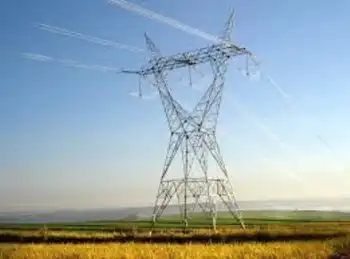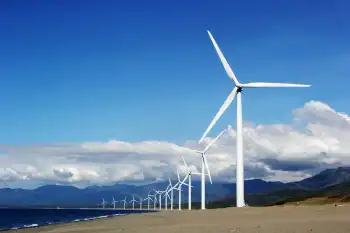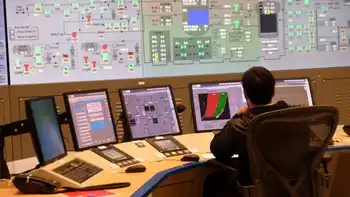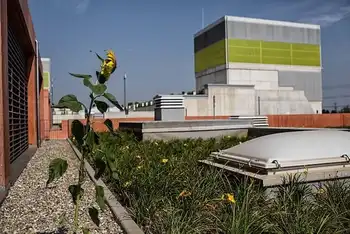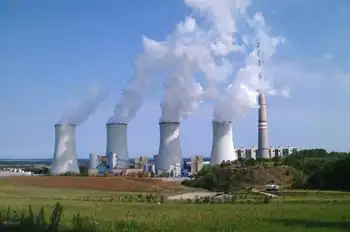Another explosion spikes radiation levels
By Toronto Star
CSA Z463 Electrical Maintenance -
Our customized live online or in‑person group training can be delivered to your staff at your location.

- Live Online
- 6 hours Instructor-led
- Group Training Available
Officials said 70 workers were at the complex, trying to cope with its myriad problems. The workers, all of them wearing protective gear, are being rotated in and out of the danger zone quickly to reduce their radiation exposure.
Kyodo news agency reported that radiation levels have become too high for personnel to remain in control rooms and led to the evacuation of another 800 staff from the plant.
The fires and explosions at the reactors have injured 15 workers and military personnel and exposed up to 190 people to elevated radiation.
“These are figures that potentially affect health. There is no mistake about that,” Chief Cabinet Secretary Yukio Edano told residents in the danger zone.
Japan's transport ministry says it has imposed a no-fly zone over a 20-mile 30-kilometre radius around the stricken Fukushima Daiichi nuclear power plant.
Ministry spokesman Hiroaki Katsuma said the decision was made because of fears that radioactive particles leaking from the complex into the atmosphere could enter passing aircraft.
The no-fly zone does not apply to helicopters that may be deployed to spray water over a reactor where a spent fuel storage pool is feared to be overheating.
Earlier, dangerous levels of radiation leaking from a crippled nuclear plant forced Japan to order 140,000 people to seal themselves indoors after an explosion and a fire dramatically escalated the crisis spawned by a deadly tsunami.
In a nationally televised statement, Prime Minister Naoto Kan said radiation had spread from the stricken reactors of the Fukushima Daiichi nuclear plant along Japan's northeastern coast. The region was shattered by the 9.0-magnitude earthquake and the ensuing tsunami that is believed to have killed more than 10,000 people, plunged millions into misery and pummeled the world's third-largest economy.
Japanese officials told the International Atomic Energy Agency IAEA that the reactor fire was in a fuel storage pond — an area where used nuclear fuel is kept cool — and that “radioactivity is being released directly into the atmosphere.” Long after the fire was extinguished, a Japanese official said the pool might still be boiling, though the reported levels of radiation had dropped dramatically by the end of the day.
That reactor, Unit 4, had been shut down before the quake for maintenance.
Nuclear officials say they may seek U.S. and Japanese military help to spray water from helicopters into an overheating spent fuel storage pool.
If the water boils, it could evaporate, exposing the rods. The fuel rods are encased in safety containers meant to prevent them from resuming nuclear reactions, nuclear officials said. But they acknowledged that there could have been damage to the containers. They also confirmed that the walls of the storage pool building were damaged.
Experts noted that much of the leaking radiation was apparently in steam from boiling water. It had not been emitted directly by fuel rods, which would be far more virulent, they said.
“It's not good, but I don't think it's a disaster,” said Steve Crossley, an Australia-based radiation physicist.
Even the highest detected rates were not automatically harmful for brief periods, he said.
“If you were to spend a significant amount of time — in the order of hours — that could be significant,” Crossley said.
Less clear were the results of the blast in Unit 2, near a suppression pool, which removes heat under a reactor vessel, said plant owner Tokyo Electric Power Co. The nuclear core was not damaged but the bottom of the surrounding container may have been, said Shigekazu Omukai, a spokesman for Japan's nuclear safety agency.
Though Kan and other officials urged calm, recent developments fuelled a growing panic in Japan and around the world amid widespread uncertainty over what would happen next. In the worst case scenario, one or more of the reactor cores would completely melt down, a disaster that could spew large amounts of radioactivity into the atmosphere.
“I worry a lot about fallout,” said Yuta Tadano, a 20-year-old pump technician at the Fukushima plant, who said he was in the complex when the quake hit.
“If we could see it, we could escape, but we can't,” he said, cradling his 4-month-old baby, Shoma, at an evacuation centre.
The radiation fears added to the catastrophe that has been unfolding in Japan, where at least 10,000 people are believed to have been killed and millions of people were facing a fifth night with little food, water or heating in near-freezing temperatures and snow as they dealt with the loss of homes and loved ones. Up to 450,000 people are in temporary shelters.
Officials have only been able to confirm a far lower toll — about 3,300 killed — but those who were involved in the 2004 Asian tsunami said there was no question more people died and warned that, like the earlier disaster, many thousands may never be found.
Asia's richest country hasn't seen such hardship since World War II. The stock market plunged for a second day and a spate of panic buying saw stores running out of necessities, raising government fears that hoarding may hurt the delivery of emergency food aid to those who really need it.
In a rare bit of good news, rescuers found two survivors in the rubble left by the tsunami that hit the northeast, including a 70-year-old woman whose house was tossed off its foundation.
The Fukushima Daiichi nuclear complex, along that battered coastline, has been the focus of the worries. Workers there have been desperately trying to use seawater to cool the fuel rods in the complex's three reactors, all of which lost their cooling ability after the quake and tsunami.
It is just recently that the complex was hit by its third explosion since March 11, and then a fire in a separate reactor.
Afterward, officials in Ibaraki, a neighbouring prefecture just south of the area, said up to 100 times the normal levels of radiation were detected. While those figures are worrying if there is prolonged exposure, they are far from fatal.
Tokyo reported slightly elevated radiation levels, but officials said the increase was too small to threaten the 39 million people in and around the capital, about 170 miles 270 kilometres away.
Amid concerns about radiation, Austria moved its embassy from Tokyo to Osaka.
Meanwhile, Air China and China Eastern Airlines cancelled flights to Tokyo and two cities in the disaster area. Germany's Lufthansa airlines is also diverting its two daily flights to Tokyo to other Japanese cities. None mentioned radiation concerns, instead giving no explanation or citing the airports' limited capacities.
Closer to the stricken nuclear complex, the streets in the coastal city of Soma were empty as the few residents who remained there heeded the government's warning to stay indoors.
Kan and other officials warned there is a danger of more leaks and told people living within 19 miles 30 kilometres of the Fukushima Daiichi complex to stay indoors to avoid exposure that could make people sick.
“Please do not go outside. Please stay indoors. Please close windows and make your homes airtight,” Chief Cabinet Secretary Yukio Edano told residents in the danger zone.
Weather forecasts for Fukushima were for snow and wind, blowing southwest toward Tokyo, then shifting and blowing east out to sea. That's important because it shows which direction a possible nuclear cloud might blow.
Some 70,000 people had already been evacuated from a 12-mile 20-kilometre radius from the Daiichi complex. About 140,000 remain in the new danger zone.
Temperatures in at least two of the complex's reactors, units 5 and 6, were also slightly elevated, Edano said.
“The power for cooling is not working well and the temperature is gradually rising, so it is necessary to control it,” he said.
Fourteen pumps have been brought in to get seawater into the other reactors. They are not yet pumping water into Unit 4 but are trying to figure out how to do that.
In Tokyo, slightly higher-than-normal radiation levels were detected but officials insisted there are no health dangers.
“The amount is extremely small, and it does not raise health concerns. It will not affect us,” Takayuki Fujiki, a Tokyo government official said.
Edano said the radiation readings had fallen significantly by the evening.
Japanese government officials are being rightly cautious, said Donald Olander, professor emeritus of nuclear engineering at University of California at Berkeley. He believed even the heavily elevated levels of radiation around Daiichi are “not a health hazard.” But without knowing specific dose levels, he said it was hard to make judgments.
“Right now it's worse than Three Mile Island,” Olander said. But it's nowhere near the levels released during Chernobyl.
On Three Mile Island, the radiation leak was held inside the containment shell — thick concrete armour around the reactor. The Chernobyl reactor had no shell and was also operational when the disaster struck. The Japanese reactors automatically shut down when the quake hit and are encased in containment shells.
The Daiichi plant is the most severely affected of three nuclear complexes that were declared emergencies after suffering damage in the quake and tsunami, raising questions about the safety of such plants in coastal areas near fault lines and adding to global jitters over the industry.
Meanwhile, France's ASN nuclear safety authority said the accident at the plant could now be classed as level six out of an international scale of one to seven.
Earlier, the ASN had rated the ongoing accident at the plant as a five or six.
Level seven was used only once, for Chernobyl in Ukraine in 1986. The 1979 accident at the Three Mile Island nuclear power plant in the United States was rated a level five.





